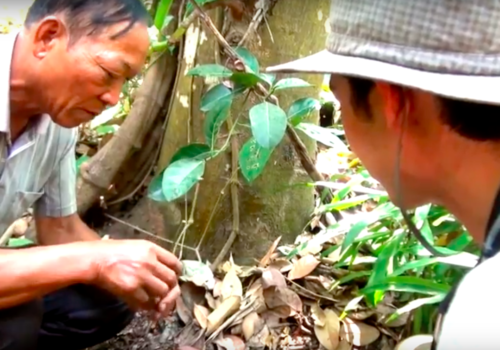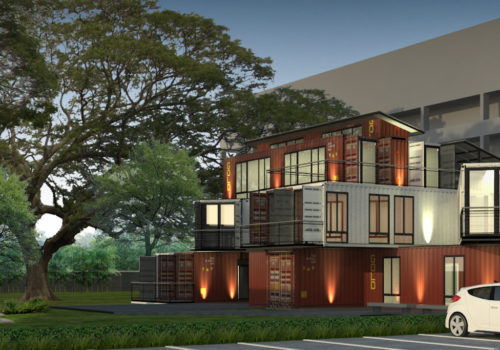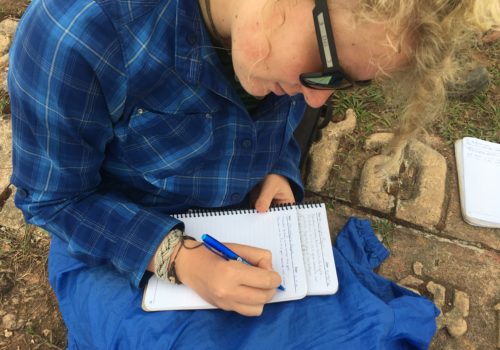Each Expedition Field Course has a mid-course seminar — a chance to reflect on what is being learned, summarize, and prepare for the next phase of the expedition. Ajaan Abram, teaching the rivers course, met the students in Nong Khai and traveled with them to the seminar site.
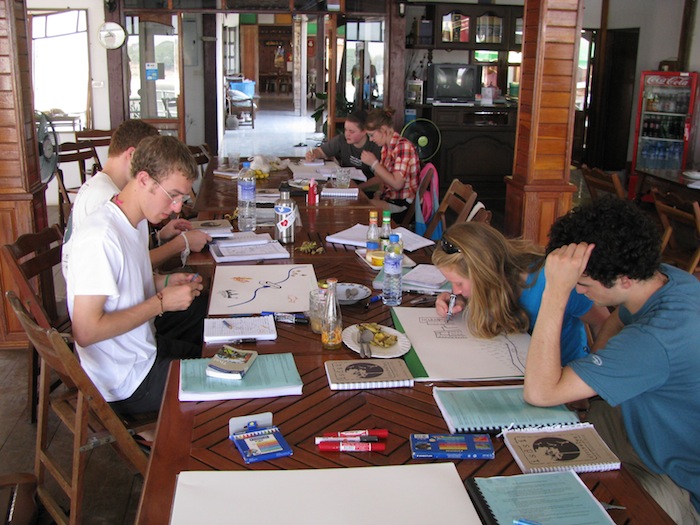
Students working on their posters in the guesthouse overlooking the Mekong river.
For the Rivers course, the seminar took place in the riverside town of Chiang Khan, in Loei province. Chiang Khan used to be a sleepy town of wooden buildings built along the banks of the Mekong river, across from Laos. Now, the old wooden buildings are being converted into guest houses, Internet cafes, and funky restaurants — as it is only a day’s drive from Bangkok. It is a great place for mid-course on Rivers, as it is half way between Issan (the Northeast of Thailand) and the Northern Thai province of Phrae, where the students paddle the Yom River (go to our maps page to see the course locations).

A street in Chiang Khan.
During the seminar the students ha a chance to talk through what they had learned from the communities of fisherfolk along the Mun river, the impact of the Pak Mun dam, as well as what they had observed on the transect of the Mekong river up from Ubonratchathani province.
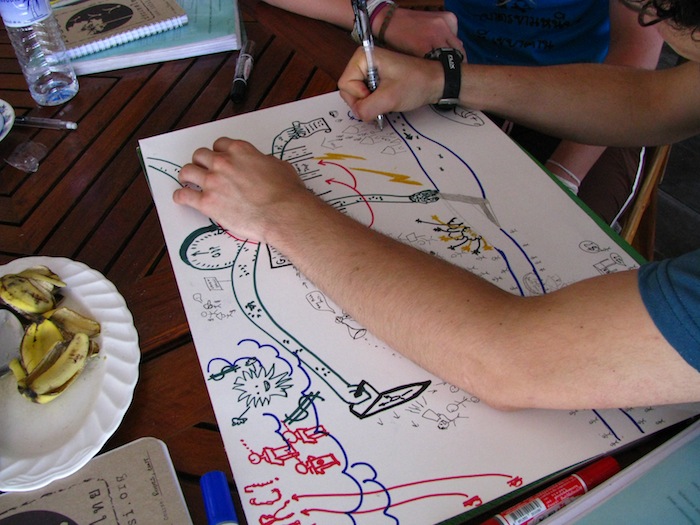
Filling in the details before presenting.
Two of the key questions that were discussed were about connections and interactions taking place in and around rivers in SE Asia.
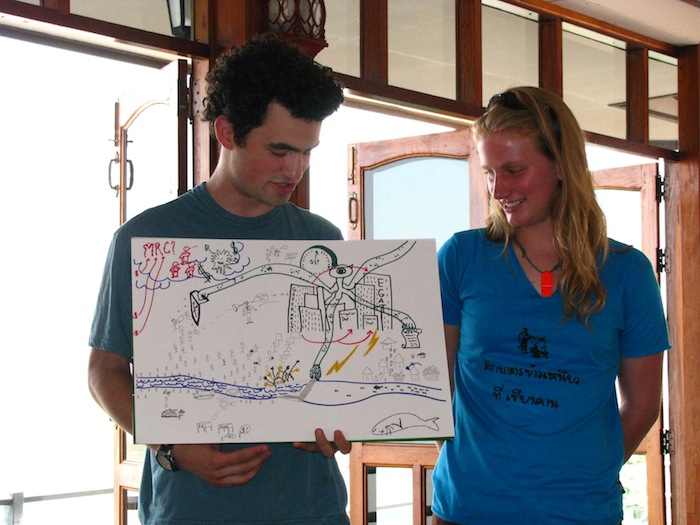
Taylor and Karen talking about the “Bangkok Monster” and its impact on the river, villagers, ecosystems and other players in resource management.
Students were asked to draw the spatial, environmental, economic and sociological connections of major players in and around the Mun River before and after the construction of the Pak Mun dam. They were also asked to reflect on transboundary interactions of players on the Mekong including the spatial, environmental, economic and sociological connections.
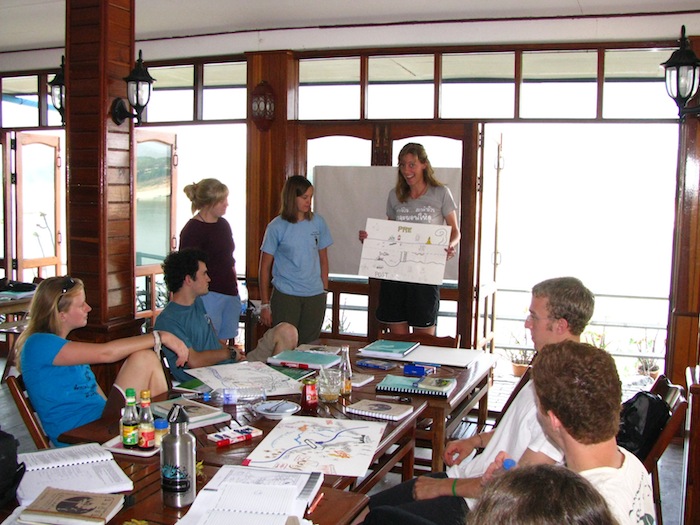
Jill, Emily and Kadilyn (with the Mekong river behind them).
Here are some photos of the day, along with their posters and explanatory text, to give you a feel for the course.
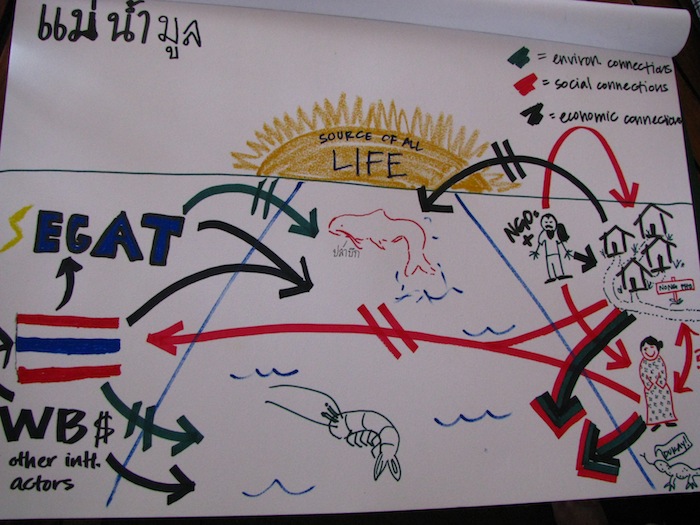
Exploring the connections between environmental, social and economic impacts of the Pak Mun dam.
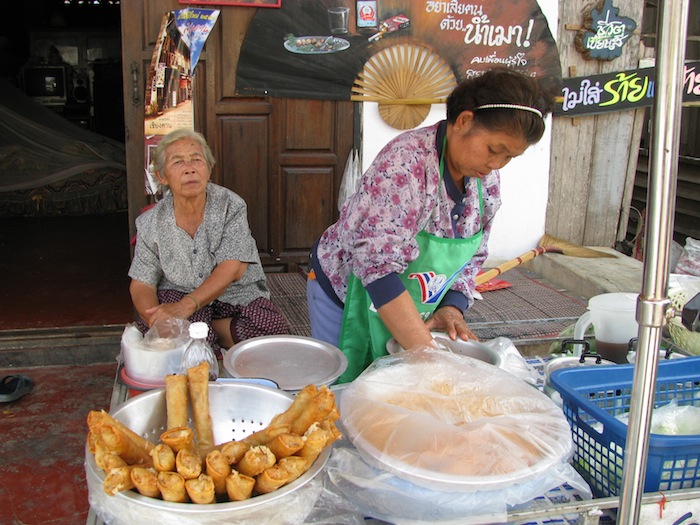
Women in Chiang Khan selling “popia tot” (fried spring rolls).
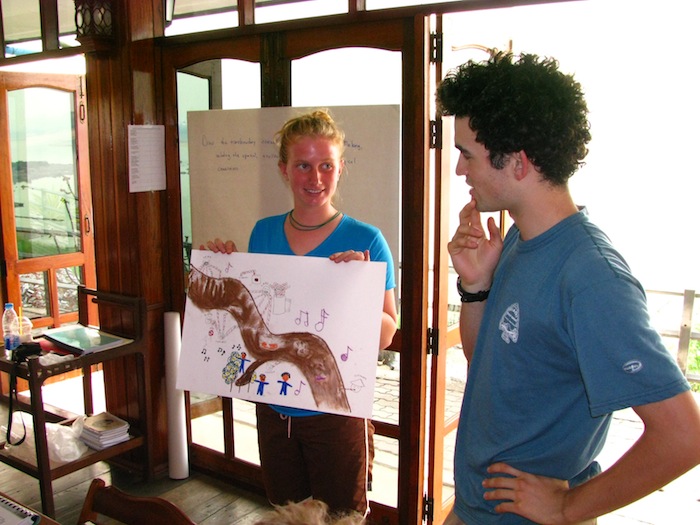
Karen and Taylor discuss the Mekong as a chocolate river (more below).
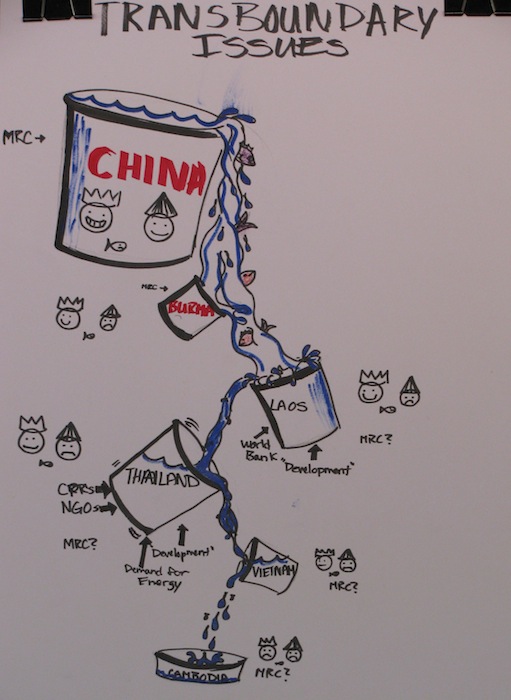
Transboundary issues -- as water flows down the river, each user takes out some, leaving less for the downstream countries.
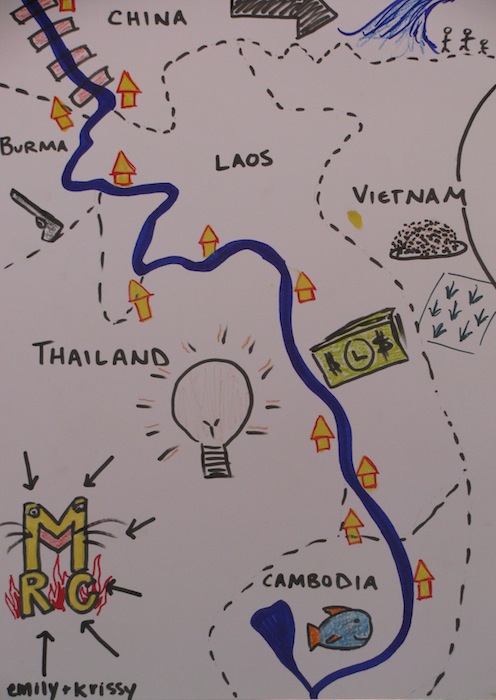
Vested interests of different actors in managing the Mekong river.
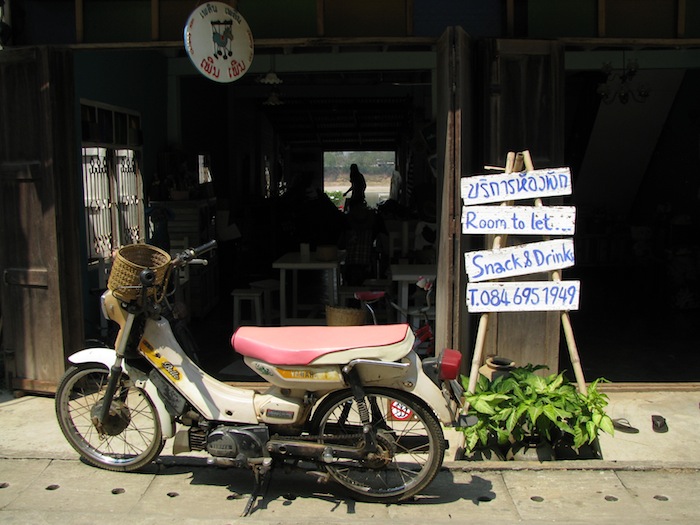
Motorcycle with rattan basket in front of the guesthouse. (You can see the Mekong River and Laos through the window out the back of the guesthouse.)
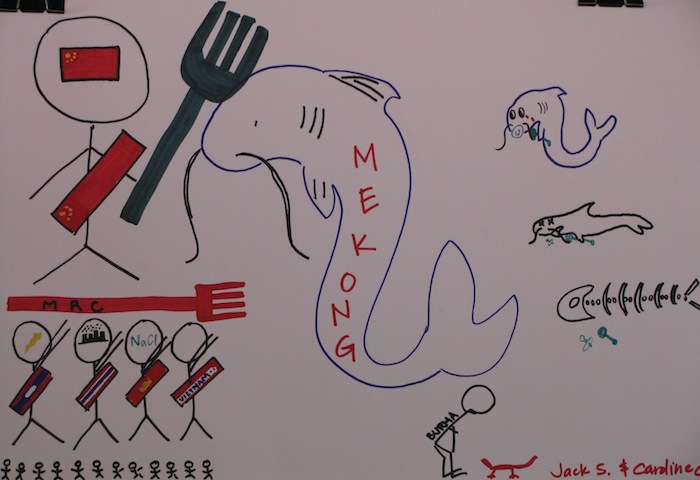
The Mekong represented as a giant catfish — with each group trying to take a share (eat the fish).
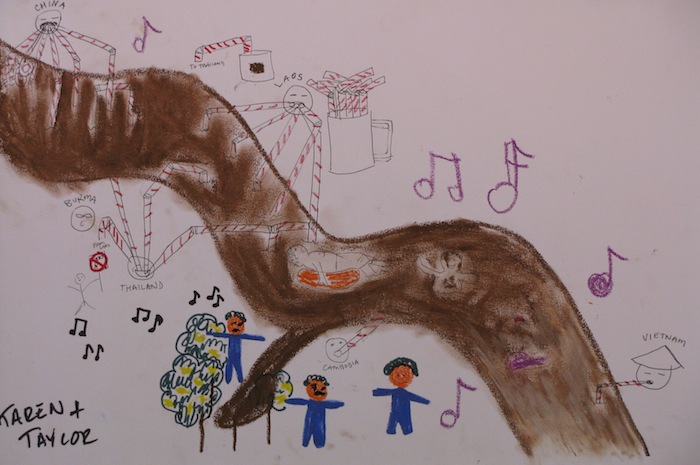
The Mekong river as the chocolate river in the Willy Wonka factory, with each user (country) drinking from the river, the ompa-loompas as the Mekong River Commission trying to get everyone to cooperate, and consumerism floating down the river.
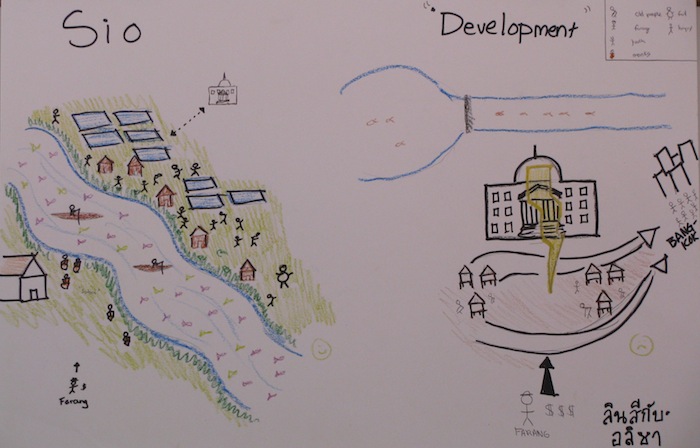
The village and their livelihood before the dam and “development” — with villagers self-sufficient in fish, and earning money from a very rich fishery. After, they loose their self-sufficiency and are forced to migrate to the city to work.
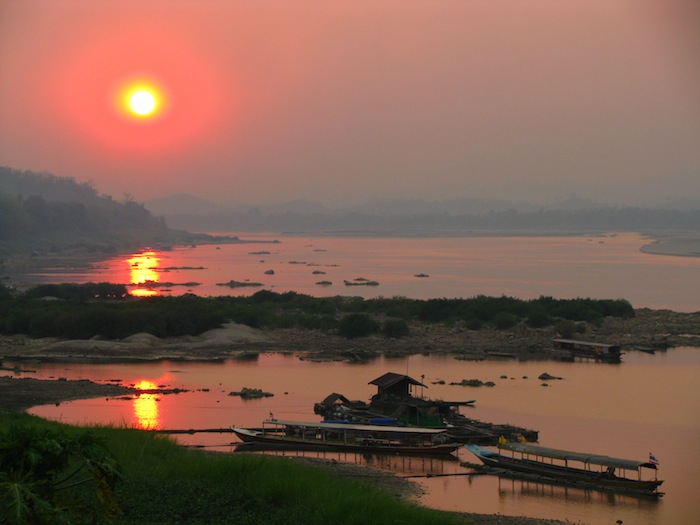
Sunset over the Mekong river -- Thailand on the left, Laos on the right.
